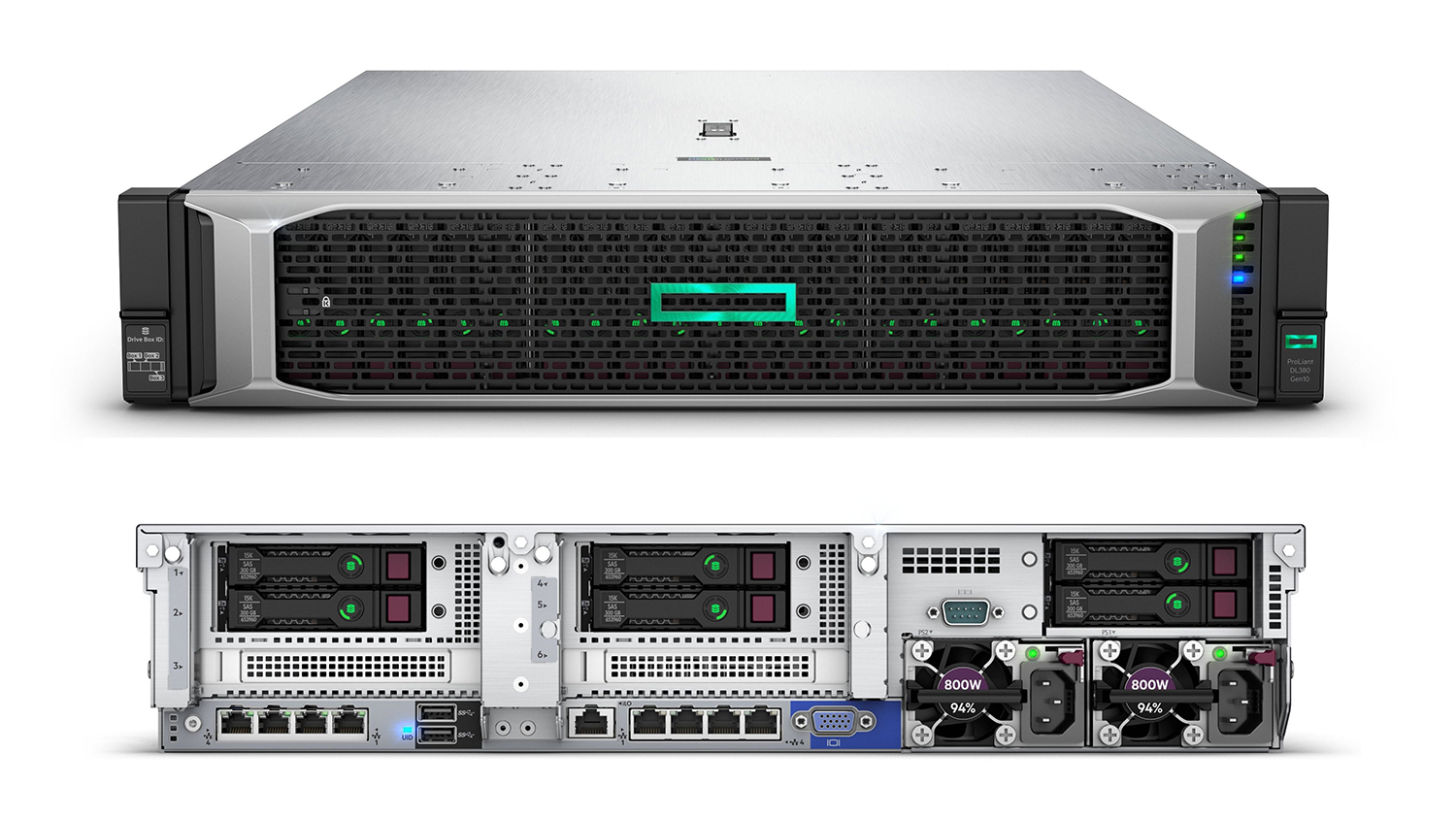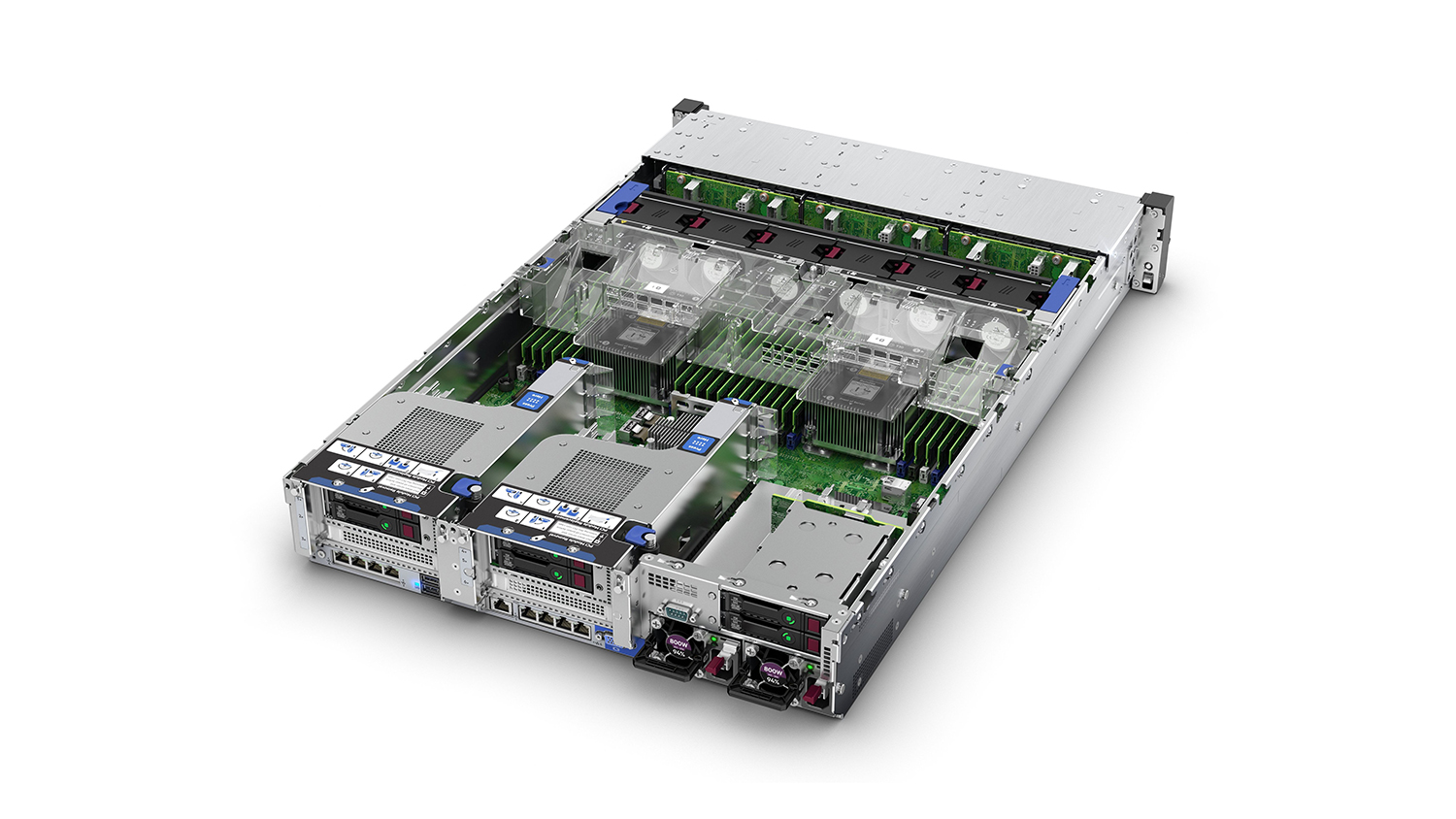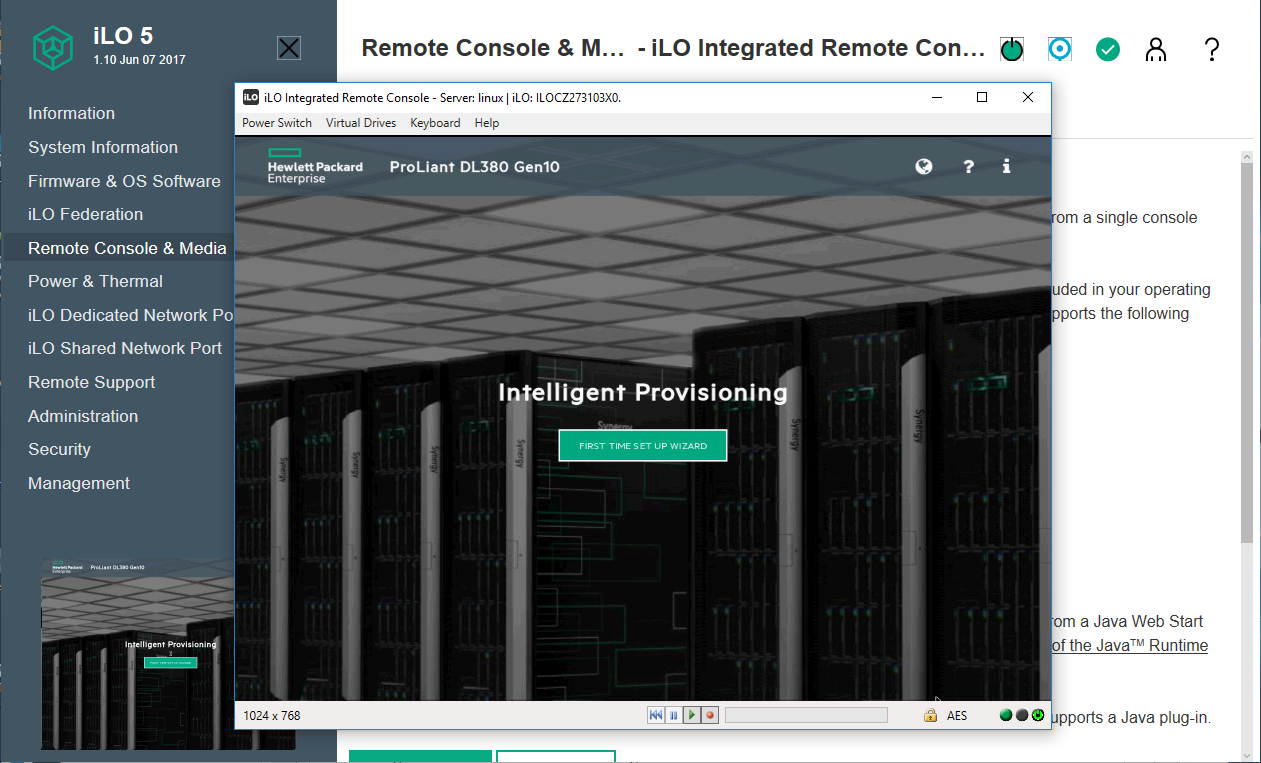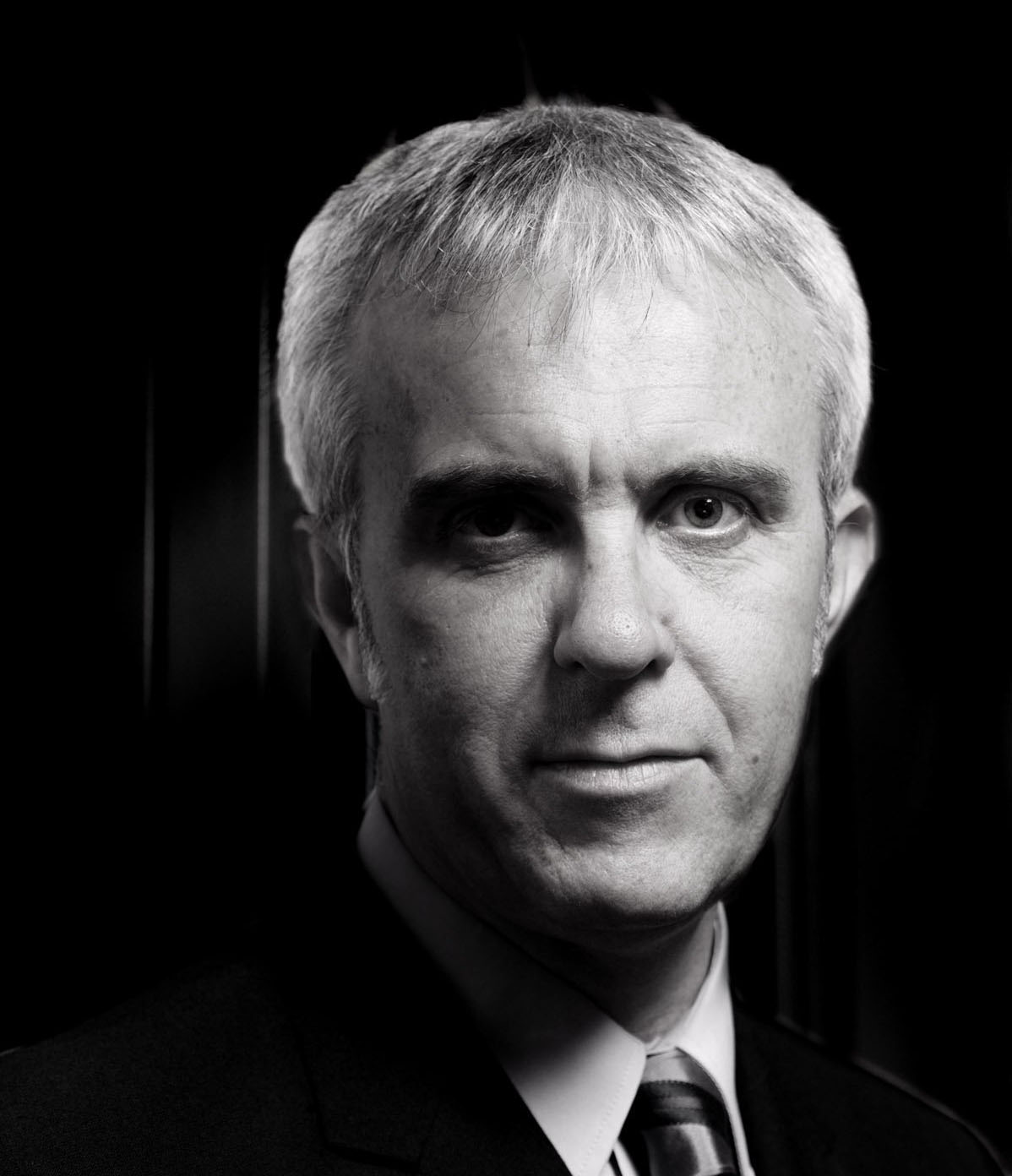HPE ProLiant DL380 Gen10 review
HPE’s flagship 2U rack server gets a massive Gen10 makeover and showcases Intel’s Xeon Scalable CPUs


Probably the most versatile 2U rack server on the planet, the DL380 Gen10 delivers a superb range of new features including big storage choices, slick iLO 5 management and tough security measures
-
+
Great value; Xeon Scalable CPUs; Highly expandable; Extensive storage options; Quality iLO 5 management; Strong platform security

HPE's ProLiant DL380 has consistently been at the top of the best seller list - and with good reason, as this is its most capable rack server. There's little it can't turn its hand to and we exclusively bring you the first hands-on review of HPE's new Gen10 flagship.
There's plenty to get excited about as along with support for Intel's Xeon Scalable CPU family, the DL380 Gen10 receives a complete refresh in the storage department with a new modular design. HPE's Smart Array RAID controllers have also been uprated to offer more storage and interface choices.
The server supports 3TB of DDR4 SmartMemory and can handle up to 192GB of HPE's Persistent Memory NVDIMMs. These target high-demand apps such as analytics or databases and provide 8GB of high-performance DRAM, backed up by 8GB of flash mounted on a standard form factor DIMM module.
And then there's HPE's new iLO 5 management controller. It offers a heap of new features as along with improved server monitoring, it has a laser-sharp focus on platform security with silicon fingerprinting, encryption and breach detection technology.

Storage
On review is the Performance model 826556-B21 which sports a pair of 12-core 2.3GHz Intel Xeon Gold 5118 CPUs teamed up with 64GB of DDR4. A quick glance at the front shows HPE has retained the 8+8+8 drive bay configuration layout, allowing up to 24 SFF drives to be presented.
You can fit HPE's universal media unit in the left bay, which provides dual USB3, a DisplayPort plus optical drive and room for two SFF drives beneath. There's more going on at the back: three dual SFF hot-swap cages can be added, taking the tally to thirty drives.
The SFF chassis also supports up to 20 NVMe drives. If capacity is a key requirement, it'll take twelve LFF drives at the front, three at the back and even four in the middle with HPE's custom mid-plane kit.
Sign up today and you will receive a free copy of our Future Focus 2025 report - the leading guidance on AI, cybersecurity and other IT challenges as per 700+ senior executives
All models start with HPE's embedded Smart Array S100i chip, which supports RAID 0, 1, 5, and 10 for up to 14 SATA drives. Our server has the Smart Array P408i-a snap-in module which adds SAS3 plus 2GB of flash-protected cache to the storage equation and HPE offers other models with differing cache quantities and external expansion ports.

Dave is an IT consultant and freelance journalist specialising in hands-on reviews of computer networking products covering all market sectors from small businesses to enterprises. Founder of Binary Testing Ltd – the UK’s premier independent network testing laboratory - Dave has over 45 years of experience in the IT industry.
Dave has produced many thousands of in-depth business networking product reviews from his lab which have been reproduced globally. Writing for ITPro and its sister title, PC Pro, he covers all areas of business IT infrastructure, including servers, storage, network security, data protection, cloud, infrastructure and services.
-
 Trump's AI executive order could leave US in a 'regulatory vacuum'
Trump's AI executive order could leave US in a 'regulatory vacuum'News Citing a "patchwork of 50 different regulatory regimes" and "ideological bias", President Trump wants rules to be set at a federal level
By Emma Woollacott Published
-
 Microsoft Excel is still alive and kicking at 40 – and it's surging in popularity as 82% of finance professionals report ‘emotional attachment’ to the spreadsheet software
Microsoft Excel is still alive and kicking at 40 – and it's surging in popularity as 82% of finance professionals report ‘emotional attachment’ to the spreadsheet softwareNews A recent survey found Gen Z and Millennial finance professionals have a strong “emotional attachment” to Microsoft Excel
By Emma Woollacott Published
-
 LastPass hit with ICO fine after 2022 data breach exposed 1.6 million users – here’s how the incident unfolded
LastPass hit with ICO fine after 2022 data breach exposed 1.6 million users – here’s how the incident unfoldedNews The impact of the LastPass breach was felt by customers as late as December 2024
By Emma Woollacott Published
